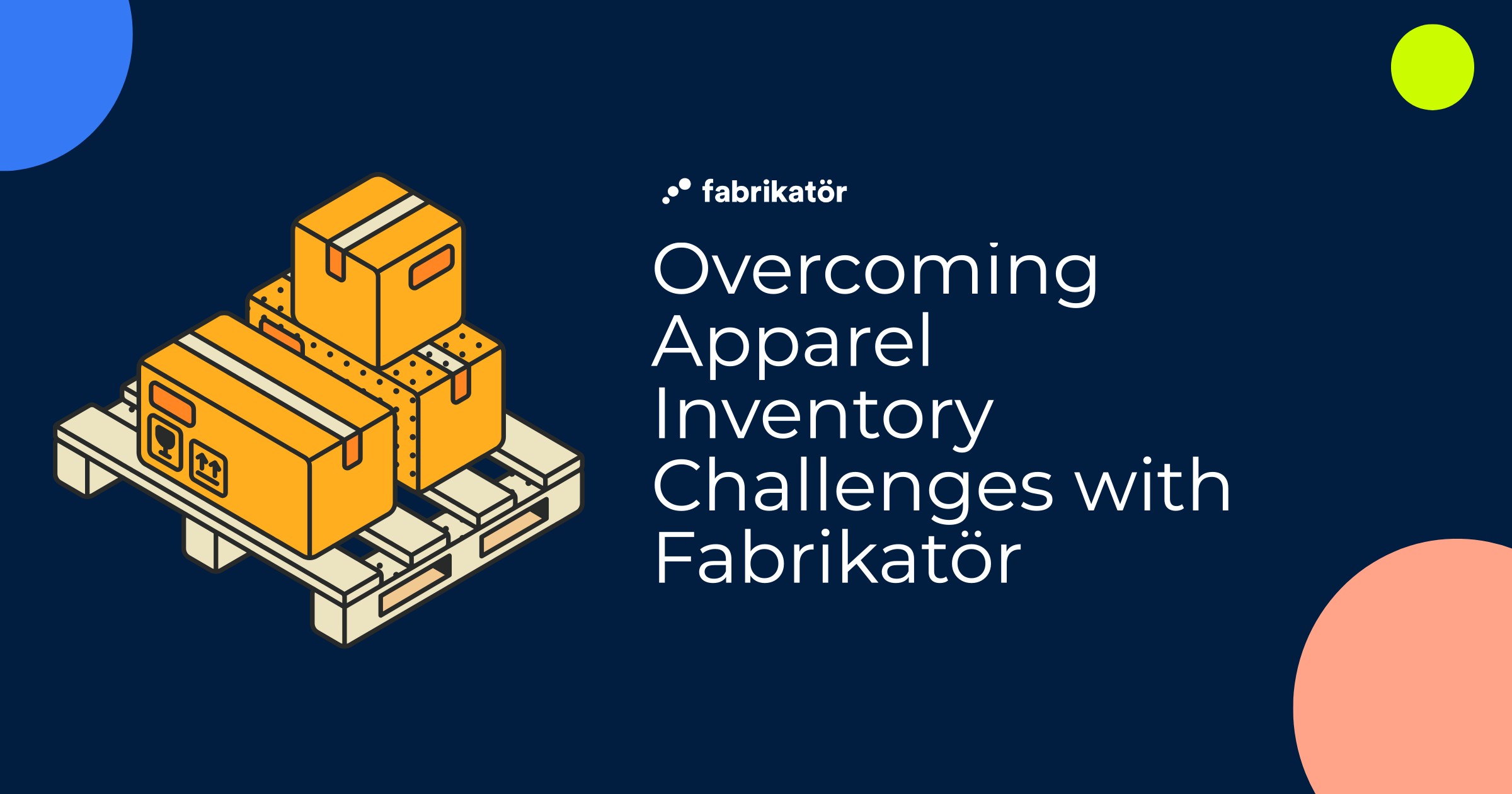Essential Inventory Management Features for Black Friday Cyber Monday 2025

Black Friday Cyber Monday isn't just another sales weekend anymore. It's a complex operational event that can make or break your entire Q4 performance. Yet most brands approach BFCM with the same basic inventory tools they use year-round, then wonder why they either run out of bestsellers by Friday afternoon or sit on mountains of unsold stock come January.
The reality is that BFCM demands a completely different level of inventory sophistication. Peak traffic multiplies everything: order volumes, stockout risks, cash flow pressures, and operational complexity. What works during regular sales periods becomes inadequate when you're processing weeks' worth of normal volume in a single weekend.
After working with hundreds of commerce brands through multiple BFCM seasons, we've seen the same patterns emerge. Brands that thrive during peak periods aren't just lucky with their product mix. They've invested in inventory management capabilities that most operators don't even know they need until it's too late.
The BFCM Inventory Reality Check
Let's start with what actually happens during BFCM that breaks traditional inventory planning. Normal demand forecasting models become unreliable because promotional periods create artificial spikes that don't reflect regular buying patterns. A product that sells 10 units per day suddenly moves 200 units in four hours.
Cash flow becomes critical because you're often buying peak inventory 60-90 days before BFCM, tying up significant capital in products you hope will sell. Meanwhile, supply chain lead times haven't shortened, so any miscalculation in October becomes a stockout or overstock nightmare in November.
Customer expectations also shift during peak periods. Shoppers become less forgiving of stockouts, longer delivery times, or backorder situations. They have alternatives and they'll use them. A stockout on your hero product during BFCM isn't just a lost sale - it's potentially a lost customer.
Most importantly, you're operating under extreme time pressure. There's no time for manual calculations, spreadsheet gymnastics, or "gut feel" decisions. Every choice about purchasing, promotions, and allocation needs to be data-driven and fast.
Real-Time Inventory Tracking and Visibility
The foundation of successful BFCM operations is knowing exactly what you have, where it is, and how fast it's moving. This goes far beyond basic stock counts. You need real-time visibility across all channels, warehouses, and product variations with updates that happen as orders process, not hours later.
Multi-channel synchronization becomes critical when you're selling across your Shopify store, Amazon, retail partnerships, and potentially pop-up locations simultaneously. Overselling because your systems don't communicate in real-time can destroy customer trust and create operational chaos during your most important sales period.
Location-based tracking matters more during BFCM because you might be fulfilling from multiple warehouses, drop-shipping certain products, or using 3PL partners for overflow. Your inventory system needs to know not just how much stock you have, but exactly where each unit is located and how quickly it can reach customers.
SKU-level performance monitoring helps you identify which specific products, sizes, and colors are moving fastest. This granular visibility allows for real-time decisions about promotions, allocation between channels, and emergency reordering of hot sellers.
Advanced Demand Forecasting for Peak Events
Standard forecasting models break down during promotional periods because they're built on historical averages that don't account for the artificial demand created by deep discounts and marketing blitzes. You need forecasting that can model promotional lifts, account for marketing spend, and adjust for external factors like competitor promotions or economic conditions.
Seasonal trend analysis becomes crucial because BFCM buying patterns often differ significantly from regular purchase behavior. Customers buy different product categories, purchase in different quantities, and respond to different price points. Your forecasting needs to weight recent promotional data more heavily than regular sales patterns.
Marketing-integrated forecasting helps you understand how different promotional strategies will impact demand. A 30% discount might generate 3x normal volume, but a BOGO offer could drive 5x volume with completely different margin implications. Your inventory system should help model these scenarios before you commit to purchase orders.
Multi-scenario planning allows you to prepare for different outcomes. What if your email campaign performs better than expected? What if a competitor launches an aggressive promotion the same weekend? Having inventory plans for optimistic, realistic, and conservative scenarios helps you stay agile when reality unfolds.
Backorder Management and Customer Communication
Stockouts during BFCM are often inevitable, but how you handle them determines whether you capture that demand or lose it forever. Advanced backorder capabilities let you continue selling products even when current inventory is depleted, maintaining momentum while protecting customer experience.
Automated backorder workflows ensure customers understand exactly what they're buying and when they can expect delivery. Clear communication about availability, shipping timelines, and any potential delays prevents surprise cancellations and negative reviews that can damage your brand reputation.
Intelligent allocation helps you decide which customers get immediate fulfillment and which enter backorder status. You might prioritize VIP customers, larger orders, or specific geographic regions based on your business strategy and customer lifetime value.
Pre-order capabilities allow you to capture demand for products you know will be restocked soon. Instead of losing sales to stockouts, you can secure orders and revenue while managing customer expectations about delivery timing.
Purchase Order Automation and Supplier Coordination
Manual purchase order creation becomes impossible during BFCM preparation when you're potentially placing dozens of orders across multiple suppliers while demand forecasts change daily. Automated PO generation based on forecasts, lead times, and target stock levels helps ensure you're ordering the right quantities at the right time.
Lead time management becomes critical because BFCM timing is non-negotiable. Your system needs to work backwards from your target in-stock date, accounting for supplier lead times, shipping delays, and internal processing time to determine optimal order timing.
Supplier performance tracking helps you make smarter decisions about which vendors to rely on for critical BFCM inventory. Historical data about delivery reliability, quality issues, and communication responsiveness should inform your sourcing strategy for peak season.
Cash flow projection tools help you understand the financial impact of your BFCM inventory investments. Seeing projected cash outflows and returns helps you balance between having enough inventory to capture demand and maintaining healthy working capital ratios.
Analytics and Performance Monitoring
BFCM generates enormous amounts of data that can inform both immediate tactical decisions and long-term strategic planning. Real-time analytics help you understand which products are outperforming expectations, which promotions are driving the most profitable sales, and where operational bottlenecks are emerging.
Sell-through rate monitoring helps you identify products that aren't moving as expected, allowing for tactical promotions or reallocation to channels where they might perform better. Conversely, tracking fast movers helps you spot opportunities for increased marketing spend or rush reorders.
Margin analysis becomes crucial during promotional periods when discounts can quickly erode profitability. Understanding true margins after accounting for promotional costs, payment processing fees, and fulfillment expenses helps optimize your promotional strategy in real-time.
Customer behavior insights help you understand how BFCM shoppers differ from regular customers. Are they more price-sensitive? Do they buy in larger quantities? Do they have different return rates? These insights inform future inventory planning and marketing strategies.
Channel-Specific Performance Tracking
Different sales channels often perform very differently during BFCM, and your inventory system should help you understand and optimize these variations. Your Shopify store might see different conversion rates than your Amazon listings, and each channel might have different customer preferences and behavior patterns.
Cross-channel inventory allocation helps you move stock to where it's converting best. If your direct-to-consumer channel is outperforming marketplace sales, you want the ability to reallocate inventory quickly to capture maximum value.
Promotional performance tracking across channels helps you understand which platforms respond best to different types of offers. This data informs both immediate tactical decisions and future marketing investment allocation.
Cash Flow and Working Capital Management
BFCM inventory investments often represent the largest cash outlay of the year, making cash flow management a critical component of inventory planning. Your system should help you model the financial impact of different inventory scenarios, understand payment timing with suppliers, and project cash recovery as sales materialize.
Working capital optimization helps balance between having enough inventory to capture demand and maintaining financial flexibility. Tools that show the cash impact of different stock levels help you make informed decisions about inventory depth versus financial risk.
Payment term management with suppliers becomes crucial when you're potentially doubling or tripling normal order quantities. Understanding exactly when payments are due and how they align with projected cash inflows helps maintain healthy cash flow throughout the peak period.
Integration Capabilities and Ecosystem Connectivity
Your inventory management system can't operate in isolation during BFCM. It needs to integrate seamlessly with your e-commerce platform, marketing tools, accounting system, and fulfillment operations to provide a unified view of your business and enable coordinated decision-making.
Marketing integration helps you understand how promotional campaigns impact inventory velocity and adjust stock levels accordingly. If a particular email campaign drives unexpected demand, your inventory system should reflect that impact immediately.
Fulfillment integration ensures that stock levels are updated in real-time as orders are picked, packed, and shipped. During high-volume periods, even small delays in inventory updates can lead to overselling and customer service disasters.
Financial system integration helps maintain accurate COGS calculations, margin analysis, and cash flow projections as inventory moves and promotional pricing changes throughout the peak period.
Building Operational Resilience
The best inventory management systems for BFCM don't just track stock and generate reports. They help you build operational resilience by providing the visibility, automation, and analytical capabilities needed to navigate complexity while maintaining control over your business.
This means choosing tools that scale with your volume, integrate with your existing operations, and provide the real-time insights needed to make confident decisions under pressure. It means investing in capabilities that might seem excessive during regular periods but become essential when everything accelerates.
At Fabrikatör, we help commerce brands bring structure and clarity to their inventory planning process, especially during peak selling periods like BFCM. By connecting sales data, marketing insights, and purchasing workflows, our platform enables operators to forecast demand accurately, manage backorders intelligently, and maintain clear visibility over their stock balance during high-pressure periods.
Book a demo with Fabrikatör to see how your team can approach BFCM 2025 with confidence and control.
The brands that thrive during BFCM aren't necessarily the ones with the best products or the biggest marketing budgets. They're the ones that have invested in the operational infrastructure needed to execute flawlessly when stakes are highest. Your inventory management capabilities are a critical piece of that infrastructure, and the time to build them is now, not three weeks before Black Friday.










